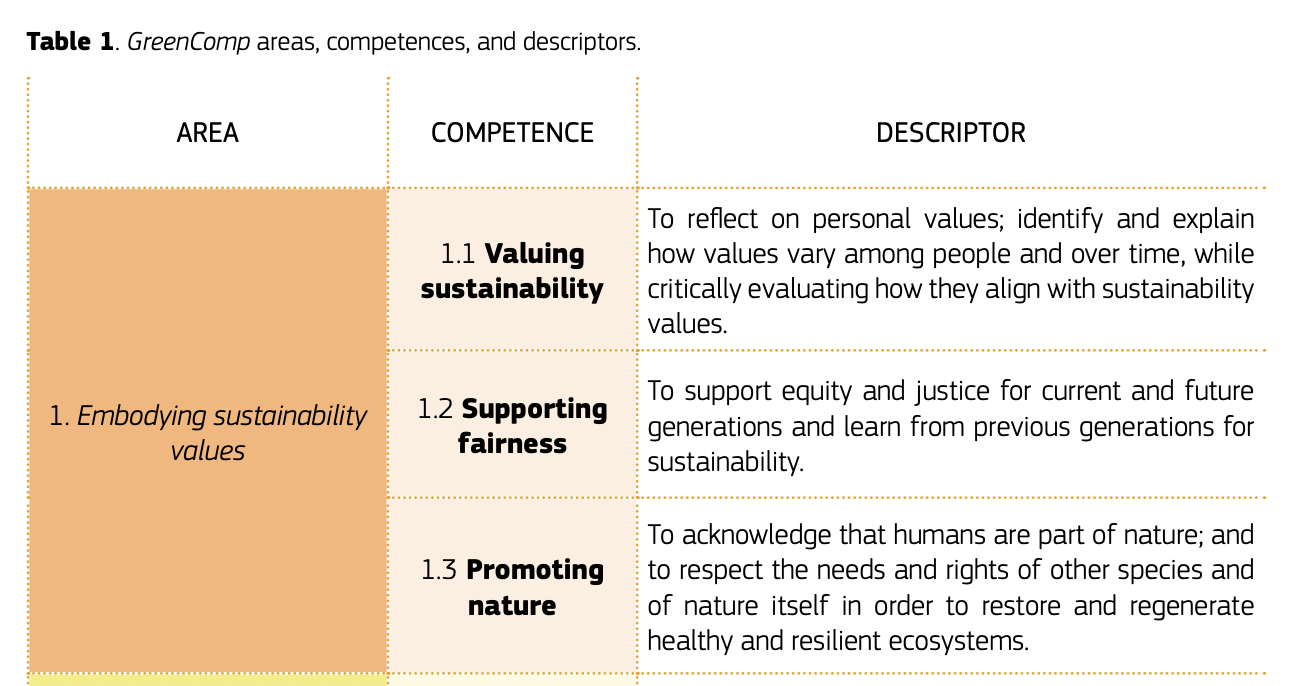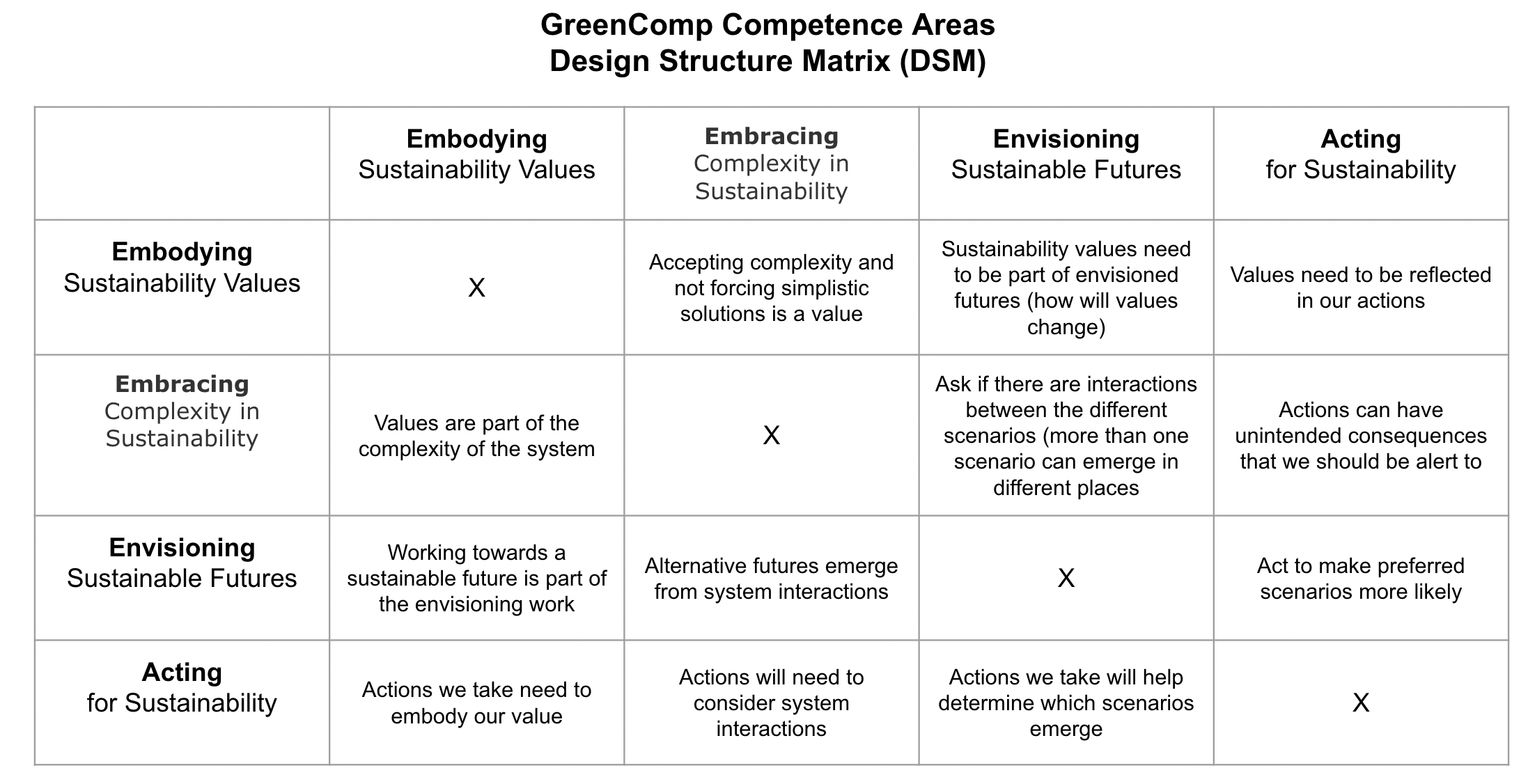GreenComp: The European Sustainable Competence Framework
Steven Forth is co-founder and managing partner at Ibbaka. See his skill profile here.
Ibbaka collects competency frameworks of all sorts. We want to see if we can represent them properly in our skill management system and see if they contain skills we should add to our skill graph. We are also just naturally curious as to all the different ways these models are designed and implemented and the value they provide.
GreenComp: The European Sustainable Competence Framework is a set of twelve competencies developed by the European Union to support the development of sustainable societies and organizations. There are some interesting ideas here, that are relevant beyond the competencies needed to develop and contribute to a green or sustainable world.
Please take our short survey on How is your organization collecting and using skill data
Let’s begin with the purpose of the GreenComp competency model.
GreenComp identifies a set of sustainability competences to feed into education programmes to help learners develop knowledge, skills and attitudes that promote ways to think, plan and act with empathy, responsibility, and care for our planet and for public health.
Note that this is designed primarily to inform education programs. That may be the design intent, but reading this I felt the model is applicable well beyond this, and could be used by organizations to define skills and competencies they need to adapt to and to thrive in the emerging sustainable economies.
The GreenComp documents can be sourced here.
The GreenComp Competency Model Architecture
GreenComp identifies 12 competences organized into four areas.
The structure of the model is as follows:
Competence Area
Competence
Descriptor
KSAs
The complete descriptor include KSAs (Knowledge Skills and Attitudes). Under the hood, Ibbaka is organized using a skill graph, so for us the KSAs are actually the most important part of the model. Here are a couple of examples of how KSAs are defined in this model.
Examples of knowledge (K), skills (S) and attitudes (A) for Futures Literacy:
K: knows the difference between expected, preferred and alternative futures for sustainability scenarios;
S: can envisage alternative futures for sustainability that are grounded in science, creativity and values for sustainability;
A: is aware that the projected consequences on self and community may influence preferences for certain scenarios above others.
Examples of knowledge (K), skills (S) and attitudes (A) for Adaptability:
K: knows that human actions may have unpredictable, uncertain and complex consequences for the environment;
S: can take into account local circumstances when dealing with sustainability issues and opportunities;
A: is willing to discontinue unsustainable practices and try alternative solutions.
Interdependencies between the competence areas and competences
One of the most interesting comments in this model is that
The four competence areas are tightly interrelated: sustainability as a competence encompasses all four taken together. The 12 sustainability competences are also interrelated and interconnected, and should be treated as parts of a whole.
Unfortunately, I did not see where these interrelations are called out in the model. One way to do this would be with a design structure matrix or DSM. (For more on this powerful tool see DSMweb.) Here is a sketch of what this might look like at the competence area level (mapping this down to the competences and even to the KSAs would be a worthwhile exercise).
Envisioning sustainable futures
One of the most exciting aspects of the GreenComp model is that is includes a competence area on envisioning sustainable futures. For me this is a central part of the model. Helping each other to imagine different alternate futures is, I believe, a core skill in many areas. This is how the GreenComp model describes this critical cluster.
Envisioning sustainable futures, including the competences
Futures literacy: To envision alternative sustainable futures by imagining and developing alternative scenarios and identifying the steps needed to achieve a preferred sustainable future
Adaptability: To manage transitions and challenges in complex sustainability situations and make decisions related to the future in the face of uncertainty, ambiguity and risk
Exploratory thinking: To adopt a relational way of thinking by exploring and linking different disciplines, using creativity and experimentation with novel ideas or methods
Futures Literacy, Adaptability, Exploratory Thinking. These seem like critical skills for managing change in many areas. One of these is the cyclical transitions between resilience, adaptation and efficiency (see Managing the tension between adaptation resilience and efficiency - how skill models evolve). They are also central to my own approach to design thinking, which begins by asking why things are the way they are and imagining how they could be different.
Given that the skills (or KSAs if you prefer) needed to envision sustainable futures are relevant to many other competency models, this is an argument for reusable skill and competency definitions and the Linked Open Data approach to sharing data for open skill graphs. This is one of the goals for the IEEE 1484.20.2 Guidelines for Defining Competencies work. See Eric Shepherd on The Value of Competency Definitions and Frameworks.











